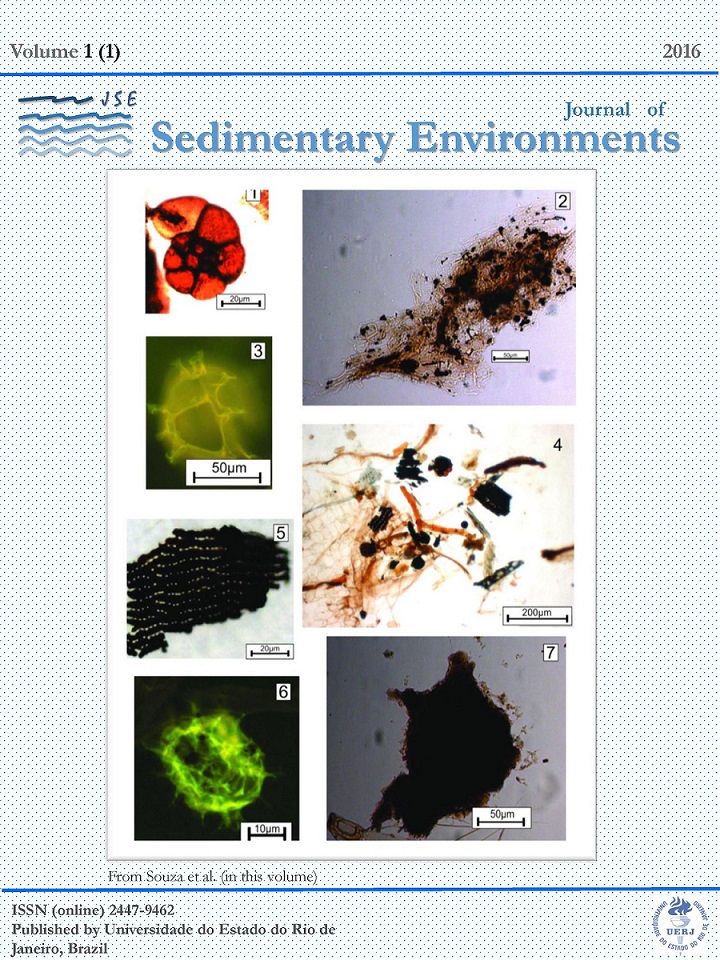THREE DIMENSIONAL MODELS OF PYRGO DEPRESSA (D’ORBIGNY, 1826) (FORAMINIFERA) PERFORMED WITH MICROTOMOGRAPHY TECHNIQUES
DOI:
https://doi.org/10.12957/jse.2016.23265Keywords:
Pyrgo depressa, benthic foraminifera, morphological analysis, Computer Microtomography, 3D-techniqueAbstract
Graphic Computer and the three dimensional technique (3D) has its applicability in various fields of science, such as: medicine, zoology, botany and paleontology. In the paleontology field it has been applied, mainly in the study of vertebrates and invertebrates fossils.
The 3D-models of the scanned fossils by computed microtomography (micro-CT) allow to observe full details of its internal and external morphology. The three-dimensional model of the species provides great detailing of internal and external structures, which can contribute to a better understanding and characterization of morphological features of the analyzed materials. This work aims to detail the morphology of Pyrgo depressa (d’Orbigny, 1826) (benthic foraminifera) using the micro-CT technics.
Results of imagens and of the 3D-modells obtained by micro-CT analysis allowed the observation of the initial and later chambers arrangement, the proloculus with a columnar structure and two apertures, the sequence and linearization of the apertures and toothplates of the following chambers, the walls thickness and density. The 3D-models also allow to deduce the function of teeth which is related to the initial formation of the peripheral keel.Issue
Section
License

Journal of Sedimentary Environments (JSE) is licensed under a Creative Commons Attribution-Noncommercial-Share Alike 4.0 International License.

